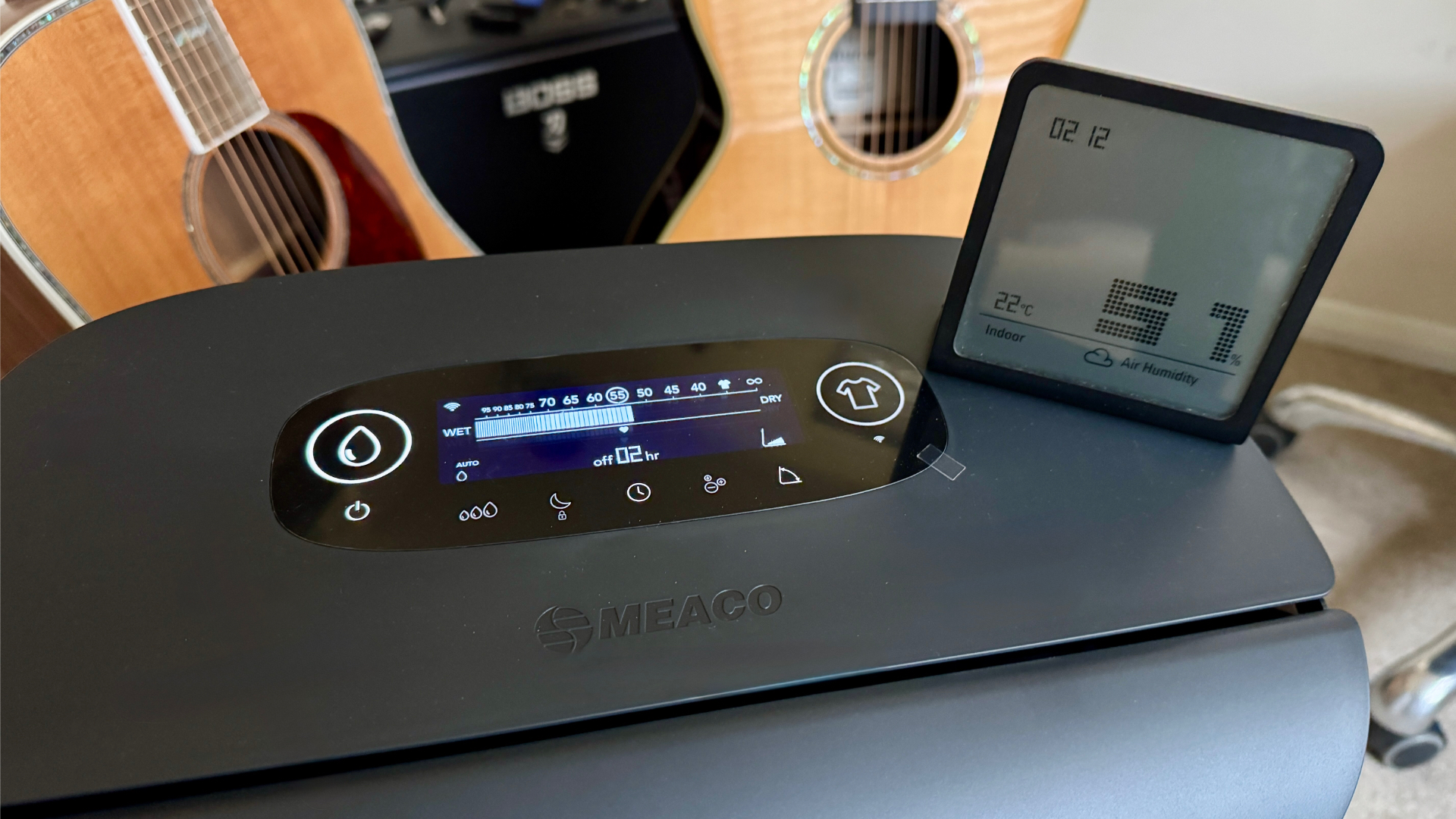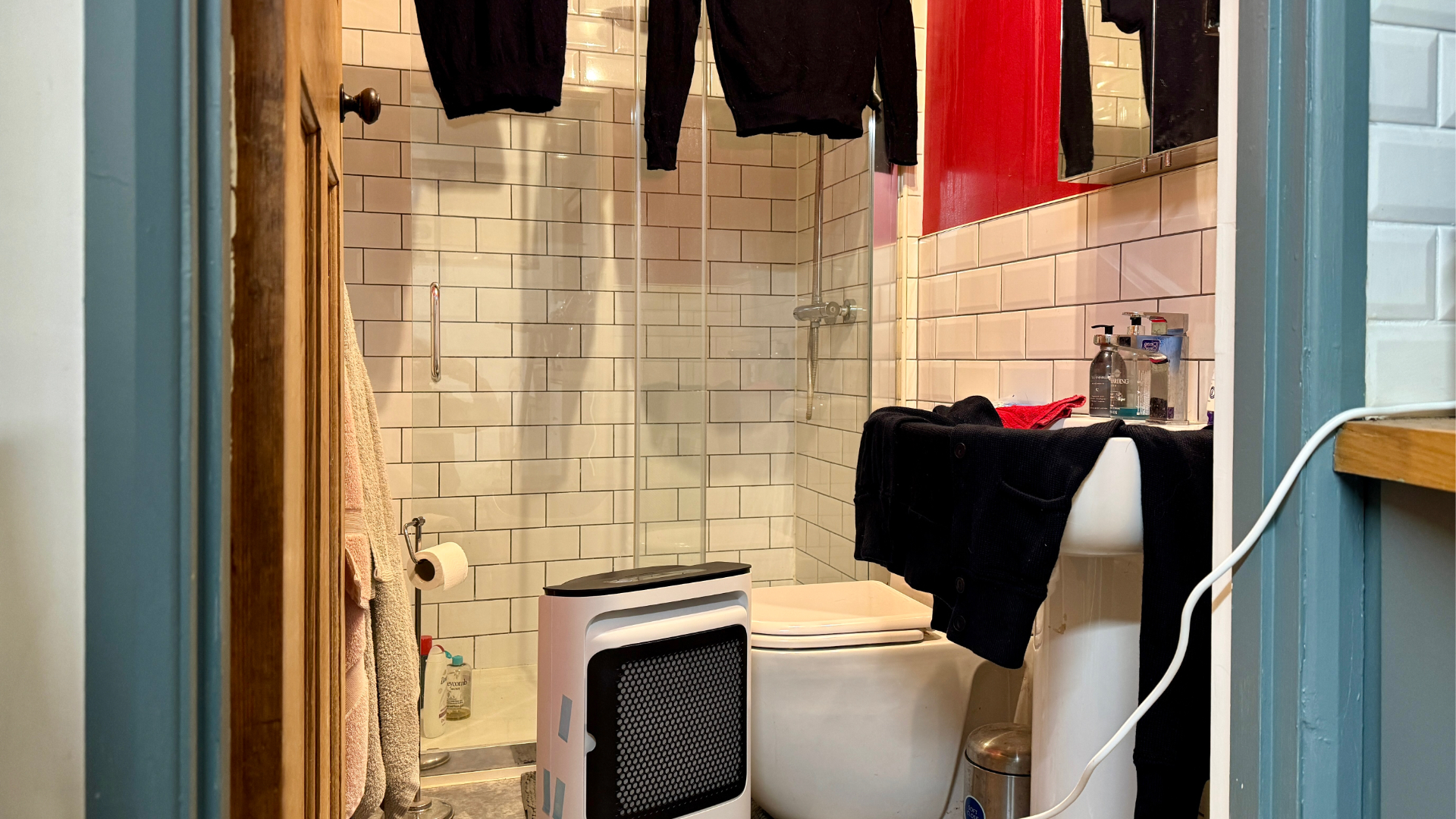Meaco DD8L Pro Desiccant Dehumidifier review: a top choice for cold environments
Built for British winters, this dehumidifier is just the ticket for reducing humidity in the home... but it’s not that cheap to run


If you’re looking for a compact desiccant dehumidifier that can run in really cold temperatures (down to 1˚C), the Meaco DD8L Pro ticks many boxes. It’s easy to use, app enabled, efficient at reducing humidity levels in small to medium rooms, and it’s surprisingly effective at drying laundry, too. However, it does use more electricity than a compressor-based model.
-
+
Operates in a wide temperature range
-
+
Excellent performance
-
+
Dries laundry quickly
-
+
Not a bad looker
-
+
Compact size
-
-
Uses more electricity than compressor models
-
-
Small water tank
Why you can trust T3

Welcome to T3’s review of the Meaco DD8L Pro, an efficient, easy-to-use desiccant dehumidifier that works in low temperatures and dries laundry, too.
The best dehumidifiers have become one of the UK’s favourite winter appliances, and it’s not difficult to see why, because humidity rises in a British winter, causing condensation on windows, damage to walls, swelling of wooded musical instruments and creating a perfect environment for mould.
But fear not because I’ve just taken delivery of Meaco's latest weapon. It’s called the DD8L Pro and it’s already proving to be a highly efficient adversary to humidity, whether it's keeping my guitar collection in fine fettle, drying out the bathroom after a shower or drying the laundry. And because it’s of the desiccant variety, it can also be used in a cold garage or cellar.
You can learn more about the differences between desiccant and compressor models by dipping into T3’s handy guide to different types of dehumidifiers.
Meaco DD8L Pro review: price and availability
At the time of writing, the Meaco DD8L Pro is only available direct from Meaco and it's priced at £259.99.
Why is humidity higher in the UK in winter?
Dehumidifier manufacturers always seem to launch during November and December, and not the summer months when you might expect humidity to be at its highest. But that’s not how it always works, at least not here in the UK.
Humidity is one of the most influential elements of the UK’s weather, shaping how warm or cold the air feels and affecting comfort, condensation levels and the walls, furniture and other contents of our homes. Because Britain is a relatively small island surrounded by sea and influenced by moist Atlantic air, humidity tends to stay relatively high throughout the year compared to continental climates. However, there are valid reasons why winter humidity in the UK is often worse than during summer.
Get all the latest news, reviews, deals and buying guides on gorgeous tech, home and active products from the T3 experts
Since cool air cannot hold as much moisture as warm air, the UK often sees higher relative humidity in cooler months even though absolute moisture levels are generally lower. Add mostly mild temperatures and an urban landscape of stone, brick and cavity walls, and moisture has plenty of opportunity to settle and cause dampness issues indoors. Not only that but the moisture in the air also makes it feel much colder than it actually is.

Meaco DD8L Pro review: design
UK-based Meaco is a past master when it comes to machines that do stuff with air. Aside from producing arguably the best range of cooling fans on the UK market, the company is also justly acclaimed for its range of dehumidifiers, both of the desiccant and compressor variety.
Take the new DD8L Pro desiccant model we’re looking at here. Firstly, it’s clearly designed as a consumer-friendly unit with a well-laid-out touch control panel, good-quality plastics and very decent aesthetics, at least for a dehumidifier. At 57cm in height, 36cm in width and just 22cm in depth, it’s a very tidy-looking machine indeed and one that should be easy enough to store away when not required.
The DD8L Pro arrives almost fully assembled and has the wherewithal to accept four optional castor wheels (the unit weighs 8.7 kilos). In order to fit the unit into the box, the supplied clip-in cable tidy needs attaching and then it’s ready to go. I failed to fit the plastic cable tidy initially because I didn’t need to use it but after about two hours of it being on, a notification popped up on the main interface telling me to fit the cable tidy. That’s pretty strange considering it’s just a piece of plastic with some clips attached. Anyway, I duly fitted it and the notification went away.
The DD8L Pro is of the desiccant variety and that means that it’s better suited to being used in lower temperatures (1˚C to 40˚C) than a compressor model (15˚C to 30˚C). In other words, it's a perfect choice for use in unheated rooms, garages and basements.
However, on the downside, a desiccant model like this will use more electricity than a compressor equivalent, and you can read more about its power consumption in the Performance chapter below.
The Meaco DD8L Pro Desiccant Dehumidifier is best suited to moderate-sized rooms like a bathroom or single bedroom (with the door closed), but it’s also more than capable of making a dent in a larger room. However, I can’t see it making much of an impact if placed in a large open-planned space, though it will tackle a damp area in a larger space effectively enough if placed within a few feet of the offending spot.

Meaco DD8L Pro review: features
The Meaco DD8L Pro comes with two main modes (Smart Energy and Laundry), plus five ancillary modes – Night, Ioniser, Timer, Louvre and Child Lock.
Smart Energy works by setting a target humidity on the main interface by tapping the drop-shaped icon a number of times or changing it in the Meaco app until you alight on your preferred humidity setting (usually between 45% and 55%). The unit’s motor and fan speed will fluctuate until the room’s humidity has stabilised, at which point the unit will drop into an efficient low-wattage rhythm while its hygrometer sensor keeps tabs on the quality of the air.
Nevertheless, you can set three power levels of manual operation if you so wish. When set to Laundry mode, the unit goes straight to full power with a default dehumidifying value or 35%, while the timer shows a running time of six hours, though this can be adjusted in the app.
The ancillary modes include Night which runs at a low fan speed with all lights on the interface turned off, Timer provides 24 hours of running time in one-hour increments, Louvre allows for four levels of adjustment from almost closed to fully open, Ioniser allegedly ‘neutralises airborne bacteria, mould spores and allergens’ and Child Lock stops inquisitive fingers from wreaking havoc with the settings.
According to Meaco, this model is capable of purging between 2.12L and 7.97L of moisture per day and the water it gathers is held in a smaller-than-average 2L water tank. This means you will need to empty the tank more regularly than other models though you can also use the included direct drainage adaptor to have the water constantly emptied into a nearby drain outlet (this is best done by using the optional wall bracket for lifting the unit above ground and out of the way).

Meaco DD8L Pro review: performance
It’s rather fortunate that I should receive this new dehumidifier at the same time that I added a new acoustic guitar to my collection. Given that the Alvarez guitar I bought is made from solid spruce and rosewood rather than the cheaper laminate variety, I am mindful that it should be kept in an area with a well balanced humidity of around 50% to 55%.
Many UK owners of very expensive American-made classic acoustic guitars are petrified that their guitars’ wood could easily swell with too much humidity, causing all sorts of financial headaches. They normally get around this by leaving their prized possession in a case with some gel capsules to absorb any moisture in the air.
The problem with this is that a) the guitar is hardly ever played because it’s a hassle to keep opening the case, playing the guitar and putting it back again and b) visitors don’t get to see the guitar out in the open and that’s no good for any kudos-seeking, Martin D28-playing musician. A dehumidifier like the DD8L Pro solves this conundrum in a thrice, and I know this because I’ve been monitoring my small studio’s humidity using the DD8L Pro’s own hygrometer along with a separate stand-alone monitor from Stadler Form.
My tests have shown that the Meaco has balanced my studio’s humidity from just over 60% to my preferred setting of 50% in about an hour and that’s a resounding success in my book. Once the preset humidity has been reached, the unit has turned off and then turned on again when it’s detected a rise in the room’s humidity.

I tested its laundry setting in the shower room and it dried two cashmere jumpers in 80 minutes and a much heavier cotton jumper in about three hours. Like all good dehumidifiers, when the water tank is full, it stops completely.
According to my Jackery Explorer 3000 V2 portable power station, the DD8L Pro uses 438 watts when it’s running at full pelt in Auto mode (that’s pretty high when compared to most compressor-based models), 234W on its lowest manual setting and just 41W when it’s ticking over at the correct humidity level. When set to laundry-drying mode, the power consumption increases to a substantial 639W though this is still a lot less than the average condenser tumble dryer which devours a whopping 3kW or thereabouts.
This model also takes ages to cool down after it’s been switched off. I timed it at around eight minutes and stuck to Meaco’s recommendation of leaving it plugged in until the cooling down process had completed. It’s no deal breaker, but that part was a bit annoying in my opinion.
Meaco DD8L Pro review: verdict
The Meaco DD8L Pro desiccant dehumidifier serves small-to-medium rooms with ease, especially in cold environments where compressor units often struggle. Granted, the continuous running time cost, smallish water tank and slow shutdown sequence are drawbacks, but for balancing humidity in the home and/or laundry drying, it’s a solid choice.
Derek (aka Delbert, Delvis, Delphinium, Delboy etc) specialises in home and outdoor wares, from coffee machines, white appliances and vacs to drones, garden gear and BBQs. He has been writing for more years than anyone can remember, starting at the legendary Time Out magazine – the original, London version – on a typewriter! He now writes for T3 between playing drums with his bandmates in Red Box (redboxmusic).
You must confirm your public display name before commenting
Please logout and then login again, you will then be prompted to enter your display name.
